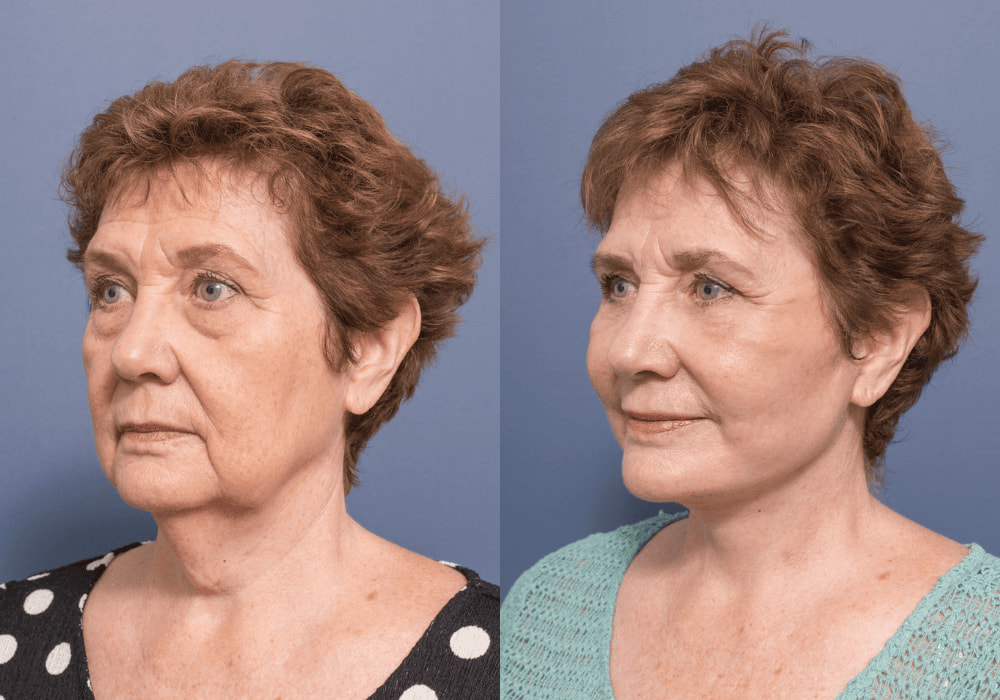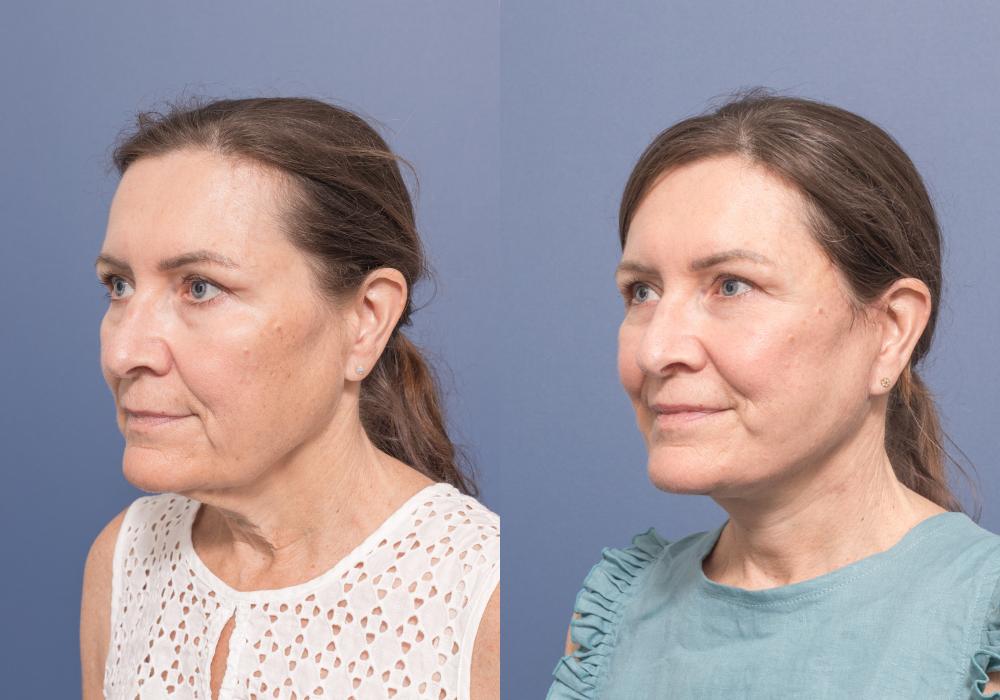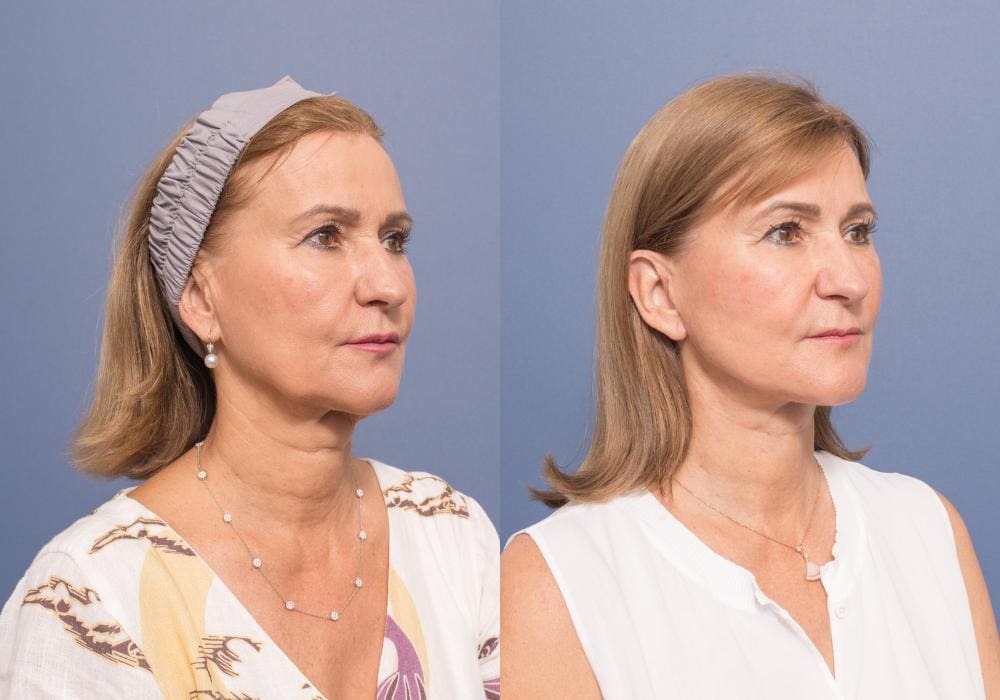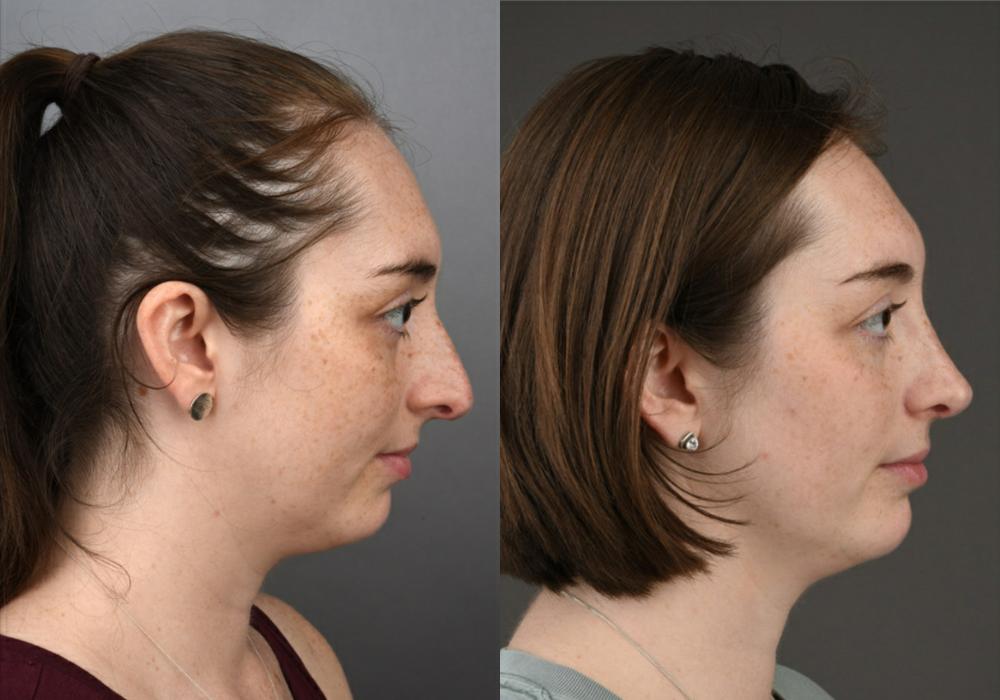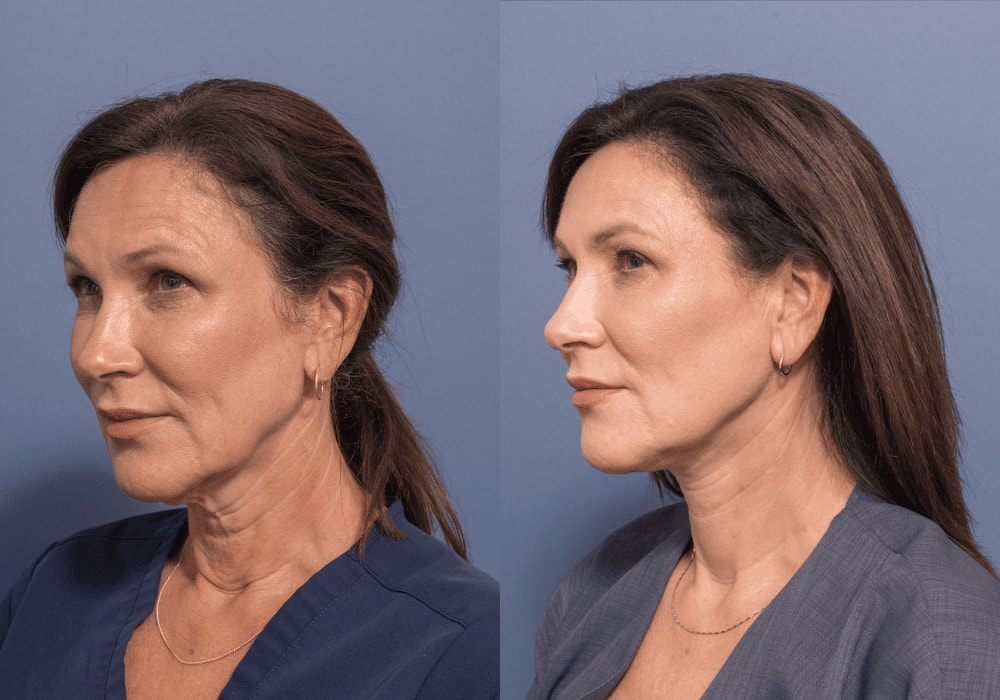
Rhinoplasty, also known as a “nose job,” is a surgical procedure that aims to optimse the function and appearance of the nose.
Primary Rhinoplasty: Optimise the appearance and function of your nose with this safe, effective procedure!
What is a Rhinoplasty?
A rhinoplasty is a surgical procedure performed under general anaesthetic that aims to enhance or restore form and function of the nose. Dr. Honeybrook recognises that every individual has unique aesthetic goals and desires, which is why he creates personalised treatment plans for each individual.
To ensure that he understands each individual’s desired outcome, Dr. Honeybrook encourages patients to bring in photos of noses they find aesthetically pleasing. By doing so, he can tailor the procedure to the individual’s specific needs and provide natural-looking results that complement the rest of their facial features.
Dr. Honeybrook also uses advanced digital 3D morphing technology to create a visual representation of what the individual’s nose could look like after the procedure. This helps patients to have a better understanding of what to expect and provides a roadmap for the surgical plan.

While a celebrity nose may be the inspiration for an individual’s desired outcome, Dr. Honeybrook prioritises creating natural-looking results that harmonise with the rest of the facial features. He is committed to providing personalised care and expertise to help his patients achieve the nose they desire while maintaining a natural and balanced look.
What are the Benefits of a Rhinoplasty?
A rhinoplasty can address a range of concerns to improve the appearance and function of the nose. Some common concerns include a crooked nose, an overly large nose, a hump on the nasal bridge, irregularities of the nose, overly large nostrils, and a bulbous or disproportionate nasal tip. In addition to aesthetic improvements, a rhinoplasty can also improve breathing problems by addressing issues with the nasal airway. Dr. Honeybrook is experienced in tailoring the rhinoplasty procedure to each patients individual needs and anatomy, ensuring a natural and balanced result that enhances the individual’s overall facial features.
Who is a Good Candidate for a Rhinoplasty?
Generally, anyone who is unhappy with the appearance of their nose may be a good candidate for rhinoplasty. However, it’s important to note that the procedure is not a one-size-fits-all solution, and each individual’s unique anatomy and goals must be taken into account.
In addition to improving the aesthetic appearance of the nose, rhinoplasty can also address structural issues that may cause breathing difficulties. Patients who have a deviated septum, enlarged turbinates, or other structural abnormalities that affect nasal function may benefit from surgery.
Ultimately, the decision to undergo rhinoplasty should be a personal one, based on a desire to improve the appearance or function of the nose. Individuals should consult with Dr. Honeybrook to determine if rhinoplasty is right for them, and to discuss the potential risks and benefits of the procedure.
What is the Difference Between Open and Closed Rhinoplasty?
Rhinoplasty is a surgical procedure that can be performed using two different approaches: open and closed. Dr. Honeybrook is trained in both techniques and tailors the procedure to each patients individual’s needs and nasal anatomy.
Open Rhinoplasty
Open rhinoplasty involves making an incision on the columella, which is the strip of tissue that separates the nostrils. This technique allows for greater visibility and access to the nasal structures, making it easier to correct complex nasal deformities. Open rhinoplasty is generally preferred for individuals who require significant structural changes to their nose, such as those with breathing difficulties or significant nasal deformities.
Pros:
- Greater visibility and access to the nasal structures
- Easier correction of complex nasal deformities
Cons:
- Increase swelling and bruising
- Slightly increased risk of a visible scar
Closed Rhinoplasty
Closed rhinoplasty, on the other hand, involves making incisions inside the nostrils. This technique is less invasive and requires less recovery time than open rhinoplasty. Closed rhinoplasty is generally preferred for individuals who require less extensive changes to their nose, such as those with minor cosmetic concerns.
Pros:
- Less swelling
- Faster recovery time
Cons:
- Limited visibility and access to nasal structures
- May not be suitable for more complex nasal deformities
Ultimately, the decision to use an open or closed rhinoplasty approach depends on the individual’s needs and nasal anatomy. Dr. Honeybrook will evaluate you thoroughly to recommend the best technique to achieve their desired outcome.
The Importance of the Nasal Septum
The nasal septum is the wall of cartilage and bone that separates the two nostrils. When performing a rhinoplasty, it is important to consider the nasal septal anatomy as it affects both the nasal airway and the aesthetic appearance of the nose.
Dr. Honeybrook always emphasises the importance of maintaining or improving the nasal airway while also improving the aesthetic appearance of the nose and performs a septoplasty on nearly all rhinoplasty patients as this will correct any possible septal deviations that can cause nasal obstruction, but it also allows Dr. Honeybrook to harvest cartilage from the back of the nose to use as grafting material to recontour, reshape and reinforce the foundations of the nose during a rhinoplasty.
By performing a septoplasty in combination with a rhinoplasty, Dr. Honeybrook can improve the individual’s ability to breathe comfortably through the nose while also correcting any deformities or asymmetries. In addition to a septoplasty, Dr. Honeybrook may also recommend additional procedures, such as an inferior turbinate reduction, to further improve the individual’s nasal airway. He takes a comprehensive approach to rhinoplasty, ensuring that the individual’s breathing is not compromised in the pursuit of a more aesthetic appearance.
Recovery After Rhinoplasty
Rhinoplasty recovery can be a lengthy process, but understanding what to expect can help alleviate patients concerns. After the procedure, individuals can expect bruising and swelling, particularly around the eyes and cheeks. This is most prominent in the first 2-3 weeks post-surgery, but will gradually subside over time.
To help manage the swelling and bruising, individuals may be given medications such as arnica montana and bromelain to reduce inflammation and pain. Cold compresses may also be applied to the affected area, but individuals should avoid applying ice directly to the skin. It is important to avoid any strenuous activity, as this can increase swelling and prolong the healing process.
During the early stages of recovery, individuals may also have external and internal nasal splints in place. External splints are typically placed on the outside of the nose and help to maintain the shape of the nose as it heals. Internal splints are inserted into the nostrils to support the nasal passages as the nose heals. These splints are typically removed within the first after surgery, but individuals may need to continue wearing a nasal retainer at night for several weeks to help stabilise the nostrils as the nose heals.
While the majority of acute swelling and bruising should subside within the first few weeks, individuals should expect some degree of residual swelling for up to 12 months at which point the final result of the rhinoplasty should be fully realised.
What to Expect After a Rhinoplasty?
After undergoing a rhinoplasty, individuals should be aware that the healing process can take some time. One of the most important aspects of recovery is understanding the evolution of nasal swelling, which can be slow to resolve. Dr. Honeybrook emphasises the importance of being patient during the recovery process.
For a primary rhinoplasty, swelling can take up to 12 months to fully resolve. During the first 2-3 weeks after surgery, individuals will experience significant swelling, which can make it difficult to evaluate the results of the procedure. However, as the initial swelling subsides, individuals will begin to see the shape of their new nose emerge.
At around 3 months after surgery, swelling is still noticeable to the individual and Dr. Honeybrook, but it is typically not noticeable to the general public. Over the next several months, the individual may not think there is any remaining swelling, however, it is important to note that there will continue to be refinement over the following months as the nasal envelope continues to heal.
After a full year of recovery, the individual will have reached their “final result”.
During this recovery period, Dr. Honeybrook will closely monitor the healing process to ensure that the nose is healing appropriately. It is important to remember that patience is key during the recovery process and that the end result will be worth the wait.
Dr. Honeybrook’s commitment to improving the post rhinoplasty recovery experience
Dr. Honeybrook is committed to exploring new ways to improve the recovery experience for his rhinoplasty patients. As part of this effort, he is currently conducting clinical trials to investigate the use of topical arnica montana and injectable platelet-rich fibrin to reduce post-rhinoplasty swelling. These innovative treatments have shown promise in reducing oedema, and Dr. Honeybrook is excited to continue his research and incorporate these techniques into his practice.
Watch Dr Honeybrook perform an open rhinoplasty to improve the aesthetic and function of the nose.

Note: Any surgical or invasive procedure carries risk. These risks will be discussed with you in detail during the consultation. For further information on risks please refer to the patient resources section of the website.

